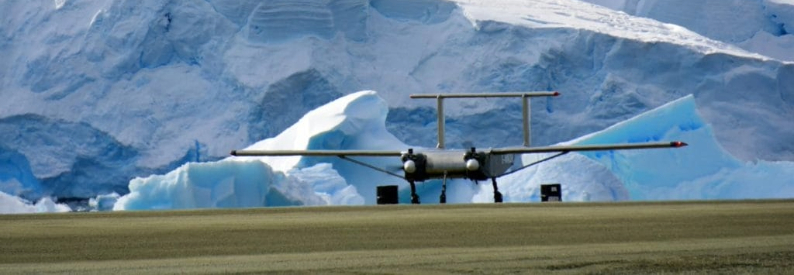Windracers Drone Maps Hidden Antarctic Geology

A Windracers ULTRA drone has played a key role in helping scientists from the British Antarctic Survey (BAS) uncover previously hidden geological features in remote parts of West Antarctica. The autonomous heavy-lift cargo drone was used to conduct Beyond Visual Line of Sight (BVLOS) missions over the icy terrain, where it collected high-resolution gravity and magnetic data that revealed vast frozen magma bodies beneath the surface.
The findings, recently published in the Journal of Geophysical Research, provide new insight into the tectonic forces that shaped the Antarctic Peninsula. Photographs taken by the Windracers ULTRA drone during its flights also captured newly discovered islands, showing rock formations deformed by the shifting of Earth’s plates.
The Windracers ULTRA drone, which BAS received in early 2024, was deployed for long-range, autonomous flights over some of the most inaccessible terrain on the planet. Its 10-meter wingspan, twin-engine design, and cargo capacity of 100 to 150 kilograms allow it to carry scientific instruments across vast distances without human oversight.
According to Stephen Wright, founder and group executive chairman of Windracers, the drone’s performance in Antarctica is a major milestone for uncrewed aerial systems. “These original missions demonstrate how Windracers ULTRA is already delivering real-world impact and operating in one of the world’s most challenging environments,” Wright said on July 29, 2025. “We are proud to support the British Antarctic Survey and contribute to greater understanding of climate systems and sea-level change.”
The drone’s autonomous flight and heavy-lift capabilities allowed BAS researchers to efficiently map unexplored regions and detect geological features that would otherwise remain hidden beneath thick ice. “Working with Windracers on this research was an exciting opportunity to take the concept of large uncrewed aerial vehicle delivering environmental science data from a dream to a demonstrated reality,” said BAS geophysicist Tom Jordan.
Jordan noted that this pioneering project opens new avenues for gathering critical data across the Antarctic continent, helping scientists better understand how the region evolved and how it may respond to future climate change. The insights gathered are expected to play a key role in monitoring long-term sea-level rise and global climate systems.
Earlier this year, Windracers introduced the ULTRA MK2, a next-generation UAV developed in collaboration with Southampton University. The upgraded version maintains a 10-meter wingspan, can fly up to 1,000 kilometers at a cruising speed of 77 knots, and has a payload capacity of 150 kilograms, enhancing its potential for both scientific and humanitarian missions.
Later in 2025, Windracers plans to establish a new operational hub in Malawi, focused on supporting middle-mile humanitarian deliveries across Africa. The expansion demonstrates the company’s commitment to applying autonomous aviation solutions in both scientific research and real-world logistics.
Related News: https://airguide.info/category/air-travel-business/airline-finance/
